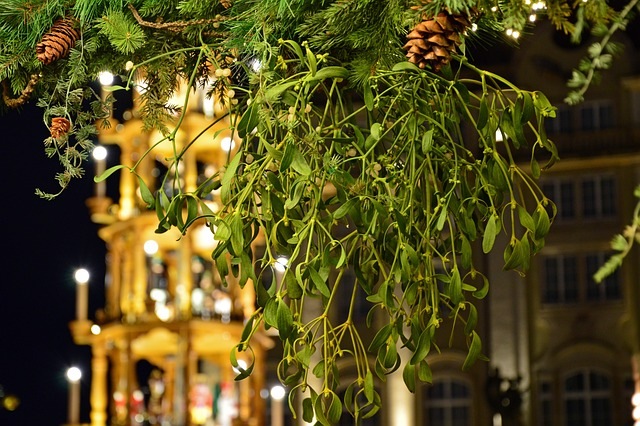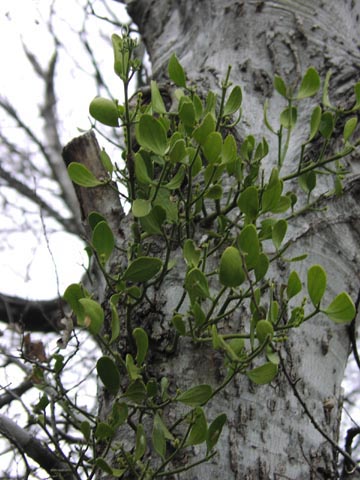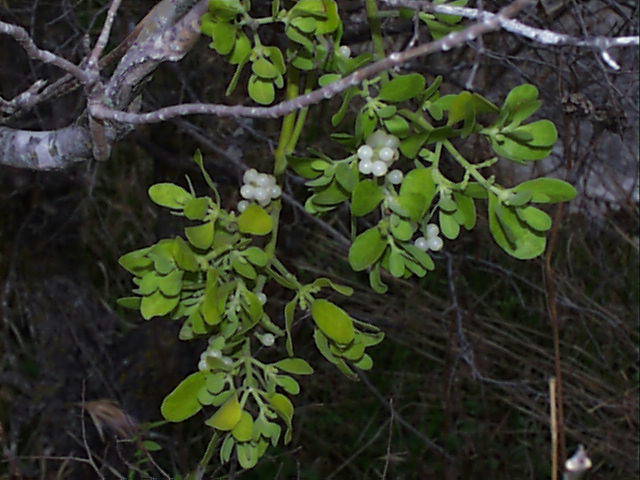By CMG Kathleen S.

Christmas decorations with mistletoe from flickr.com
It is challenging to realize we are only weeks away from Christmas. Christmas is that wonderful time of year full of Holiday traditions. Being kissed under a sprig of mistletoe is one of those traditions. An 1820 quote from Washington Irving has an early reference, “the mistletoe with its white berries hung up, to the imminent peril of all the pretty housemaids.”

Kissing under the mistletoe tradition from flickr.com
Mistletoe (Phoradendron tomentosum) is a hemi-parasite, meaning the plant gets part of its energy from photosynthesis and the rest from nutrients siphoned away from a host tree. Deciduous trees are the primary targets but cacti can also be affected.

Mistletoe on a Hackberry tree from sbs.utexas.edu

Mistletoe with white berries from sbs.utexas.edu
The female mistletoe makes a seed and that seed is inside a small white flower. The seed is covered by “viscin” which is a sticky glue. Birds are responsible for spreading the seed into the upper branches of trees. Once this seed attaches to the tree bark, it forms a penetrating root. Host trees can be damaged by this hemi-parasite but the most susceptible are trees already diseased or damaged. The best means of removing mistletoe is to cut back the affected branch 12 inches from the mistletoe plant. For the safety of all of your guests and pets though you want to remember many species of mistletoe are poisonous.
References:
williamson.agrilife.org, modernfarmer.com